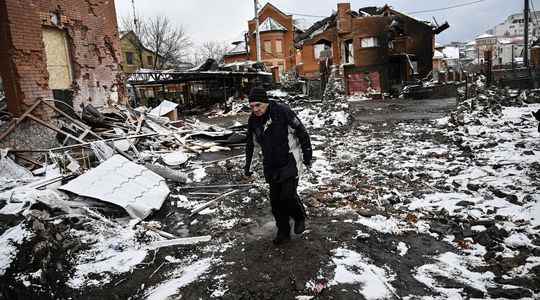There will be a “world after”. In this regard, the economic consequences of Russia’s invasion of Ukraine will be even deeper than those resulting from the Covid-19 pandemic, to which they are added. This pandemic had led to a massive increase in public debt and had given rise to inflationary pressures. It had also led rich countries to strengthen their research and development and industrialization policies. Schematically, the war in Ukraine reinforces these tendencies, but in different ways, and it makes them more brutal and lasting.
The Russian invasion generates three structuring evolutions for our economies. First, it signals a new age of economic sanctions, which will constrain our dependence on hydrocarbons. Second, it will increase food prices. Third, it will lead to a massive increase in military spending in the West. These three developments have a decisive common point for our social contract: they are inflationary.
The measures decided by the West against Russia are unprecedented in their scale, their speed and their geographical spectrum (the countries which apply them represent more than 50% of the world’s GDP). In the short term, they aim to cause a stunning effect. From a strategic point of view, they provide tools for diplomatic de-escalation (the wider the range of sanctions, the more of them can be lifted). In the long term, in the absence of a settlement of the conflict, they weaken the targeted country, particularly on the military level. As long as the war lasted, the country hit by a freeze on its foreign exchange reserves or a partial exclusion of Swift messaging suffered economic isolation which reduced its production and income. Russian GDP should fall by 10 to 15% this year! Additional sanctions could relate to the boycott of Russian hydrocarbons, an American boycott initially and perhaps European thereafter. The West is entering forced and forced into an era of defossilization of its energy. It is necessary to financially asphyxiate Russian finances and it is essential to reduce our CO2 emissions. But the cost will be huge! First of all, we will have to help our poorest fellow citizens to buy more and more expensive energies and, secondly, to invest in new electricity production units such as EPRs.
The risk of a food shortage is real
The combination of these measures and the conflict raises the equilibrium price of gas, oil, wheat and corn. We talk so much about gas that we forget that Russia and Ukraine represent 30% of world wheat exports. Ukraine is also a major producer of sunflower, rapeseed and barley, whose exports risk being compromised for several years. Half of the world’s agricultural production uses fertilizers, the cost of which is rising due to the price of hydrocarbons. In addition, a quarter of the volumes of fertilizers traded in the world are Russian.
Cattle feed consists of 30% corn and cereals. The prices of food, like those of energy, will therefore increase for a long time. These price movements will have massive redistributive effects: positive for large cereal producers, negative for breeders, deleterious for the poorest households in rich countries, dramatic for households in less developed cereal importing countries (in the Maghreb for example ).
Finally, the war started by Russia is forcing most European Union and NATO countries to increase their military spending. This process was already underway in the United States or in France. He is new to Germany. I fell off my chair when I read last week in the FinancialTimes that the Dutch Minister of Finance, Sigrid Kaag, considered that extracting military expenditure from the debt and deficit ratios tolerated by the European Union posed a collective financial risk. The truth is that the cost of defending the free world will be high and it will land us in a world of debt and inflation. There is hardly any alternative.
